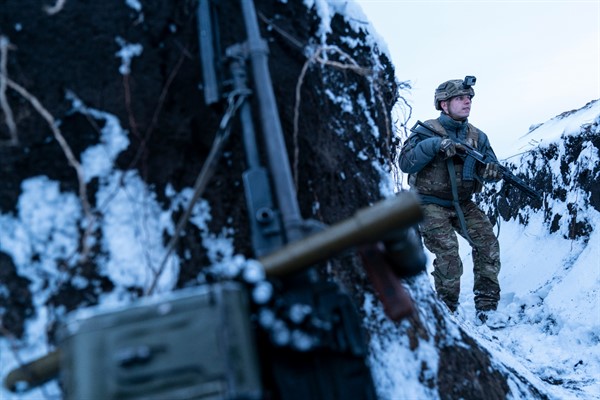For the better part of six years since Russia and Ukraine signed the Minsk II cease-fire accord for the disputed eastern Ukrainian region of Donbass, one question has loomed: How will the U.S. and NATO respond if Russian troops again cross back over the so-called Line of Contact, dividing Ukrainian forces from Russian-backed separatists? With reports now trickling in of a buildup of Russian military forces along the border and in Crimea, Washington and Brussels may need quick answers soon.
In response to those reports, U.S. Secretary of State Antony Blinken spoke this week with his Ukrainian counterpart, Dmytro Kuleba, while the chairman of the Joint Chiefs of Staff, Gen. Mark Milley, called top Russian and Ukrainian military officials. The State Department said Blinken reaffirmed U.S. support for Ukraine “in the face of Russia’s ongoing aggression” and “expressed concern about the security situation in eastern Ukraine.” The commander in chief of Ukraine’s armed forces, Ruslan Khomchak, and his Russian counterpart, Valery Gerasimov, traded accusations about the escalation of clashes in the Donetsk area of Donbass that has led to a number of deaths. Social media posts on Twitter showing Russian tanks being transported by train across Crimean territory and near the Russian city of Krasnodar have not yet been verified. Nonetheless, Gen. Tod D. Wolters, the head of the U.S. European Command, told The New York Times that it has placed American troops on heightened alert.
Few conflict hotspots have been as vexing for American foreign policy—or, indeed, American domestic politics—as Ukraine. Ever since Russian troops invaded Crimea in February 2014 and sent covert special operators to spearhead a pro-Russian separatist uprising in Donbass, the clash between Ukraine and Russia has seeped into every aspect of American politics. The aftermath of the Euromaidan protests, which led to the ouster of Ukraine’s former president, Kremlin favorite Viktor Yanukovych, and sparked the separatist conflict in the east, has not been confined to Ukraine. Even as it caused political upheaval in Kyiv, Ukraine’s crisis also warped American presidential politics, starting with Donald Trump’s first impeachment, over his attempt to pressure Ukrainian President Volodymyr Zelensky to dig up damaging information about Joe Biden. It also nearly broke the State Department’s senior diplomatic corps, which had witnessed Trump’s abuse of power firsthand.

